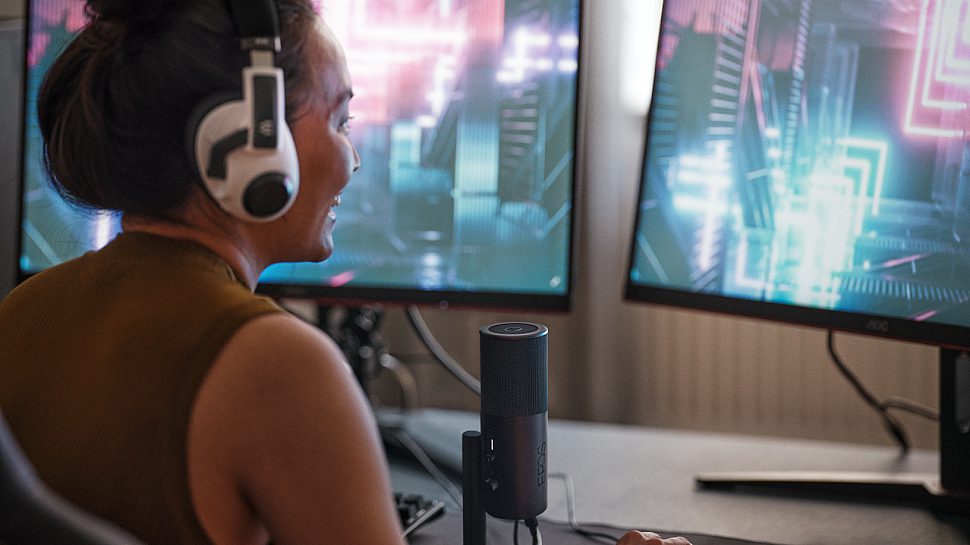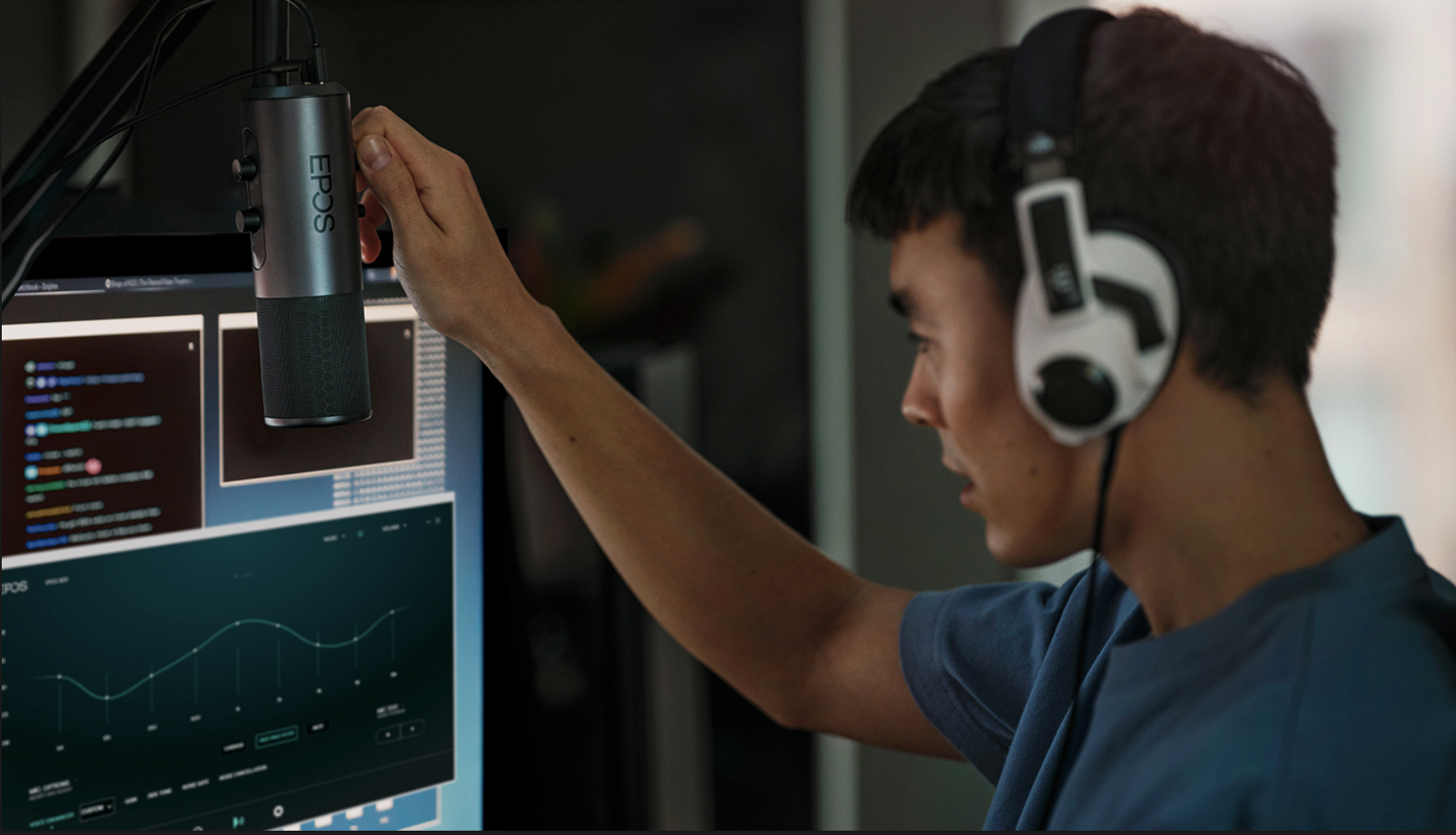EPOS is making a name in the industry by delivering a couple of impressive headsets at a steady pace. With the B20 microphone, they want to add a USB microphone for streamers or podcasters. Is the microphone worth buying? Let’s find out!
Quality straight out of the box
EPOS has a rather impressive track record of delivering quality products for the more hardcore crowd. The prices of the products are often a bit higher compared to the direct competition, but you do get some impressive quality in return. That’s also the first thing you’ll notice when you take the B20 out of its box. It’s a sturdy and heavy microphone created with black aluminum, so no cheap plastic here. It’s a solid black microphone that fits right into the line of EPOS headsets, no flashy RGB lights here, just a nice solid black microphone. Included in the box is of course a USB cable but also a stand to place the microphone on any flat surface. Just like the microphone itself, the stand is pretty solid and leaves some room to elegantly get rid of your cable while streaming. So straight out of the box, you’re ready to go! You can also use the microphone on a boom-mic extension but that one isn’t included in the box, so if you’re looking for such a setup it’s important to know that it’s certainly possible but it isn’t included.
Decent functions
When it comes to the actual functions of the microphone, it comes packed with some fun features. I personally like the way you can use the microphone for different purposes or different streams. Depending on how you set the audio button, you can use it for a single person’s stream, dual stream, or even a group stream. The B20 can pick up sounds at 360 degrees so it doesn’t matter where you sit as a speaker, as long as the B20 is in range and you selected the correct setting, you’re good to go. I’m currently using the B20 as our go-to microphone for our Horrorscoop (a Dutch horror movie podcast that I record together with my girlfriend). During our podcast, we only use the B20 to pick up both of our voices while sitting on opposite sides of the microphone. This works surprisingly well and saved us a lot of hassle of connecting and editing two separate audio tracks. Of all of the B20’s functions, I like the Bidirectional, Cardioid, and even Omnidirectional the most as they work as advertised. With just a flick of the button, you change the way you capture the audio without any trouble.
With its 24-bit 48KHz quality, the B20 is able to pick up crystal clear sound, although it isn’t always easy to find that sweet spot. The gain button is perhaps my most disliked feature of the B20. Where other gain buttons have a clear start and stop, the gain button of the B20 can spin around endlessly resulting in you not knowing if your gain is at zero or a hundred percent. It’s a bit annoying when you want to find your preferred gain before recording and it’s something that could have been an easy fix with just a different type of button. If you’re using the B20 on Microsoft, you can use the EPOS Gaming Suite software to tweak your settings and save a couple of profiles, making your life easier but on Mac, it’s incredibly hard to get this working as the software isn’t yet fully supported. I hope they’ll fix this issue in the future because the B20 really is capable of capturing audio in the best way possible. It’s a shame it gets held back from its full potential due to some design choices.
Conclusion:
The B20 is a pretty impressive microphone and is capable of recording audio under a lot of different circumstances, making it a very versatile and impressive microphone for streamers and podcasters. It isn’t perfect however and especially the gain control could have been a lot better but aside from that, we can certainly recommend this microphone.



